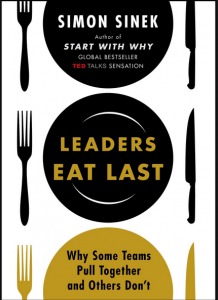 By Casey Jones, CAPP
By Casey Jones, CAPP
If you haven’t read any of Simon Sinek’s books or listened to him speak, you’re missing out. He covers leadership, teamwork, and communications. I’ve just finished his second book, Leaders Eat Last, which appeared on both the Wall Street Journal and New York Times bestseller lists after it was published in 2014; it was recently updated to include content regarding millennials.
Sinek covers a lot of ground in this highly digestible and informative book. What distinguishes this book from the many out there focused on teams and effective leadership is the idea that there are strong physiological reasons behind our propensity to act for the good of our group or focus on self-preservation. Sinek discusses the chemicals that drive selfish actions–endorphins and dopamine–and the ones that reinforce selflessness–serotonin and oxytocin. These four chemicals controlled the behavior of our prehistoric ancestors and still do so today. To understand the effect of these chemicals on our behavior and why they exist is to understand that we are created to work together to accomplish our goals in work, at home, and in life.
The other key theme of this book is the notion of the “circle of safety,” which Sinek describes as a fundamental and critical feature of effective and successful organizations. Leaders draw a circle around their people (not just themselves and their closest confidants) and keep them safe from internal dangers such as fear of losing one’s job or fear of ridicule and public humiliation from failures. Employees are more likely to work together, trust one another, and cooperate when a strong and generous circle of safety exists, making their teams more capable of dealing with external dangers from competition or emerging and uncontrollable variables beyond the organization’s control.
Give Sinek’s Leaders Eat Last a read and tell me what you think.
Casey Jones, CAPP, is vice president with TimHaahs.
